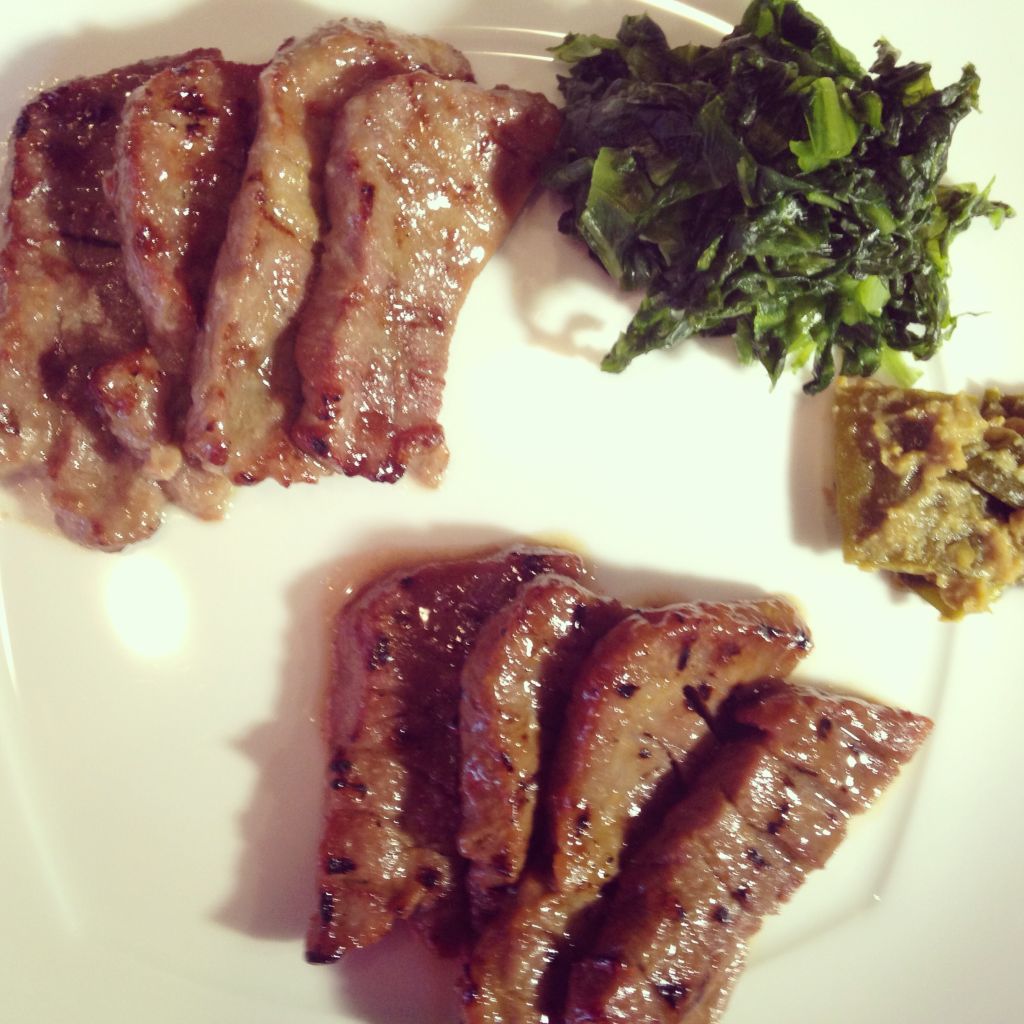
Getting Tongue in Sendai
Gyutan (beef tongue) grilled over binchotan at Dateno Gyutan in Sendai
SENDAI, JAPAN – What’s not to like about a country where they love to get tongue? The sentiment is primarily limited to northern Japan, in the Miyagi prefecture, and the city of Sendai, about 200 miles north of Tokyo (but only 1 hr. 30 min. by bullet train). I had come here looking for signs of renewal and recovery as the three year anniversary of the devastating earthquake and tsunami approached. Reminders were evident on my second night, as a 4 magnitude earthquake shook me awake at 2 a.m., keeping the locals in bed, as this sort of thing apparently happens frequently. What I didn’t expect to find was a cool climate culture that absolutely cherished offal, mainly in the form of beef tongue.
I’m not exactly a Johnny-come-lately to tongue. Despite the fact chefs like Fergus Henderson and Chris Cosentino have made nose-to-tail and all things offal their respective mantras, I was eating tongue long before it became sexy, in St. Cloud, Minnesota circa 1978. It was there, over celebratory Jewish holidays and other special occasions, when my mom would boil tongue (purchased from a kosher butcher in Minneapolis, an hour away) for at least two hours with a few onions and some carrots or celery. Once the connective tissues had softened, she would whip out her electric knife, slice it into half-inch rounds, then simmer it in a pan with cans of tomato sauce and peas. Not exactly the stuff I was watching Julia Child do back then, but certainly a respectable part of the Eastern European Jewish culinary repertoire. The texture was always pleasingly soft, with the slightest chew, and plenty of beefy oomph. but I don’t recall ever being grossed-out by it. I can’t say the same for my friends, who were probably turned off by the fact the bovine’s tastebuds managed to peek through the sauce on occasion.

Apparently, following WWII, beef was scarce, and expensive in Japan. Especially in the north, where it was hard to procure the primal cuts. Locals say the presence of American G.I.’s in the 1940s and 50s probably kick-started the tongue craze. As they grilled their strips, filets and porterhouses, they would leave the odd bits – including tongue – for the garbage. Japanese ingenuity and a desire for something other than rice and fish stoked an interest in this odd-shaped muscle. What if they marinated this gyu (beef) tan (tongue) in miso, or soy or just salted it for a few days? What if they could serve the tip (lean) and the rear (fattier) as two separate sections? What if they could slice it relatively thin, then char it over blazing hot binchotan charcoals, while brushing the pieces with more miso or soy? Bingo.

The result is a caramelized outer layer, hiding a beefy, juicy interior, that’s not overcooked. There isn’t a ton of fat in tongue, so you don’t necessarily need to cook it long. However, the salt and/or miso marinade of at least four days contributes to the softness, breaking down the fibers and rendering it more pliable and thus, easier to digest. Bonus points for having the tastebuds scraped off by the processor to prevent any queasiness for first-timers.
Did it remind me of mom’s tongue as a kid? Not really. This version had more texture and crunch, given some seasoning from those incendiary charcoals, while having that umami-rich miso and soy undercurrent, playing a slow, steady rhythm in every bite. On the side, you’ll typically find miso-soaked shishito peppers and some spinach, but that’s about it (a far cry from mom’s kishke). If you find yourself up north, I would highly recommend seeking out some gyutan yourself. It won’t be hard; there are nearly 100 restaurants and specialty shops where you can get it to-go or grilled to-order.

